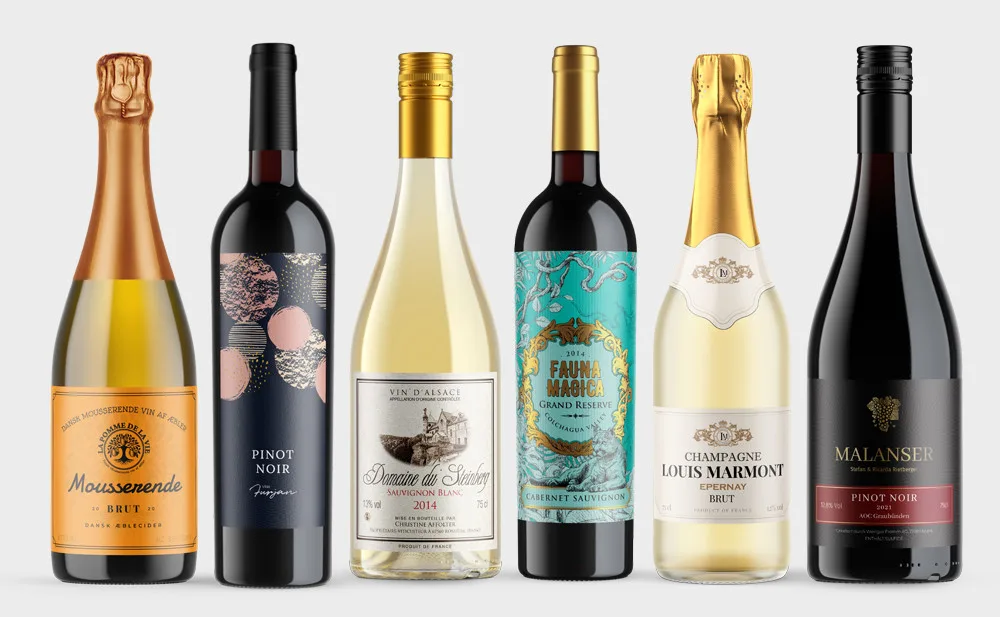In the realm of wine production, every detail counts, from the choice of grapes to the intricacies of the fermentation process. Yet, one aspect that often goes overlooked is the presentation, specifically the labels that adorn the bottles. Among the various components that contribute to a wine label’s appeal, the choice of paper material stands out as a key factor. This article delves into the importance of selecting the right wine label paper and how it influences the consumer’s perception and the brand’s image.
The choice of paper for wine labels is not merely a matter of aesthetics. It involves considerations of durability, printability, and the overall impression it leaves on the consumer. High-quality paper materials ensure that labels withstand the conditions they’re subjected to, from moisture in cellars to the chill of refrigeration, without deteriorating. The tactile sensation a label imparts can also significantly impact a consumer’s decision-making process, often subconsciously swaying them towards one bottle over another.
Advancements in printing technology have expanded the possibilities for wine label design, allowing for intricate details and vibrant colors. The use of wine label printer paper is at the heart of these developments. This specialized paper is engineered to work seamlessly with the latest printing technologies, providing a canvas that brings designers’ visions to life with precision and clarity. Whether the goal is to achieve a matte finish, a glossy look, or a textured feel, choosing the appropriate printer paper is crucial.
Environmental sustainability is another aspect that wineries and consumers alike are increasingly considering. The wine industry is moving towards more eco-friendly practices, and the choice of label paper plays a significant role in this transition. Papers made from recycled materials or sourced from sustainable forests are becoming more prevalent, offering a way for brands to demonstrate their commitment to the environment. This not only appeals to environmentally conscious consumers but also aligns with global efforts to reduce waste and promote sustainability.
Marketing and branding strategies in the wine industry heavily rely on the visual appeal of bottle labels. The right paper material can enhance a label’s design, making it more striking and memorable. It can also communicate a brand’s values, whether they’re about luxury, tradition, or innovation. Customized labels, made possible by versatile paper options, allow brands to tell their unique stories, connect with their target audience, and stand out in a competitive market.
Furthermore, regulatory compliance is a critical consideration in label design. Labels must adhere to legal requirements, displaying information such as alcohol content, origin, and allergen warnings clearly. The legibility and durability of this information are directly influenced by the paper material chosen. High-quality papers ensure that these details remain intact and readable, even under adverse conditions, thus meeting regulatory standards and avoiding potential legal issues.
In the digital age, the integration of technology with wine labels is becoming more commonplace. Innovative paper materials are compatible with digital enhancements, such as QR codes, which can lead consumers to websites, promotional videos, or augmented reality experiences. This blend of traditional labeling with digital interactivity offers a new dimension to the wine-drinking experience, engaging consumers in a way that goes beyond the physical label.
Choosing the right paper for wine labels is a complex decision that influences the success of a wine brand in numerous ways. It affects the label’s appearance, durability, and even its ability to incorporate technology. As the wine industry continues to evolve, the significance of label design and the materials used will only grow. For wineries looking to make a lasting impression, investing in high-quality wine label paper is a decision that can pay dividends in brand recognition, consumer loyalty, and ultimately, sales.
The intersection of tradition and innovation in wine label design underscores the importance of paper choice. As consumers become more discerning and the market more crowded, the ability to distinguish a brand through its label’s material quality and design is invaluable. From enhancing the tactile experience to ensuring environmental responsibility, the right paper material is a fundamental component of a successful wine label. It’s a testament to the idea that in wine presentation, as in wine making, the details make all the difference.





